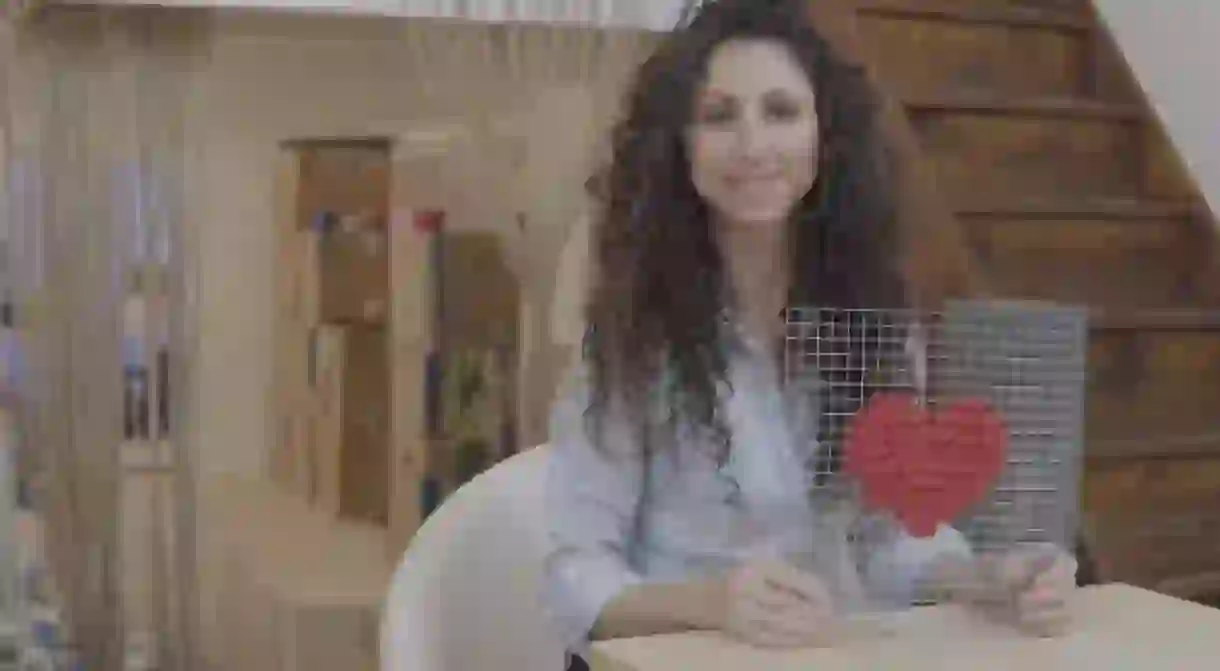Meet Raquel Rodrigo, the Designer Who Is Using Embroidery to Inject New Life Into Valencia's Streets

If the words ’embroidery’ and ‘cross-stitch’ conjure up images of your grandma and her cute-but-kitsch portraits of her favourite cat, then you’ve yet to come across the work of Valencia-based artist Raquel Rodrigo. Using the art form she learned from her mother, this young artist is creating XL street-art installations that are bringing new life to Valencia’s streets.
Old craft, new way
When she was a little girl, Raquel Rodrigo – like many other kids in Spain – was taught embroidery by her mother. A traditional way of decorating linens, tablecloths, cushions and other textiles, embroidery is a skill which has been around for centuries and until recently had mostly fallen out of fashion with younger generations. These days though, the handmade and DIY craze has exploded, as millennials rediscover manual crafts and take a break from those computer screens.
Someone who needed no convincing to take up embroidery again is Raquel Rodrigo. This young artist decided to take her childhood hobby to the next level and create large-scale embroidery art. Ditching the traditional embroidery threads and ‘eavenweave’ fabrics, Raquel works with thick cotton cord made from natural fibres which she weaves across a metal grid-patterned frame.
If Rodrigo relies on these sturdy materials, it’s because her art’s final resting place is the streets of her home town, Valencia. Her vision is to take a traditionally home-based activity and take it to the streets to make it public art, leaving her embroideries to become part of their environment. In so doing, she’s also giving visibility to all the women whose embroidery has for so long been restricted to the home and rarely been given attention.
Seeking inspiration in spaces
Whereas embroidery is traditionally found on soft furnishings and household items, Rodrigo turned to the city itself for inspiration. She explains that she gets her inspiration by walking around and observing the spaces she sees around her. Every lamppost, broken window, empty wall or doorway can become a canvas, inspiring its own embroidery.
Then it’s back to the studio to give her inspiration life. A fan of blending the old with the new, the artisan and the industrial, Rodrigo has very much made her embroidery a 21st-century art form by using her computer to assist in the design of her work. Sitting at her desk, she designs her pieces using software that enables her to adapt her designs to specific sizes and shapes, as well as allowing her to visualise the final result before she even starts work on the embroidery.
Finally, her work takes its place on the street and the artist lets her work runs its course. Rodrigo knows that street art is essentially ephemeral, subject to human intervention as much as the wind or the rain. But for her, that’s all part of the lifecycle of her art and part of the beauty of these pieces: they too become part of the public space.
Weaving stories into the city
These super-sized embroidery works are essentially weaving new life into the streets of Valencia, and so far, Rodrigo says the reaction has been very positive. She believes that because so many people have their own memories of embroidery, her work is immediately relatable to those who see it, making it both recognisable and unusual.
Thanks to the slim metal frame, her creations appear as if they are suspended or holding onto an invisible frame. Imagine walking down the street to find the walls are covered in beautiful embroidery which appears to be woven into the very fabric of the city.
Rodrigo’s art clearly appeals to the senses: it’s not uncommon for most people’s first reaction to be to touch the embroidery. These huge works are fully three-dimensional, revealing each cross, loop and knot. While some of her creations appear more traditional, depicting flowers for example, other designs are more modern, such as a 70-metre (230-foot) installation with a simple message: ‘Certain things take time’.













